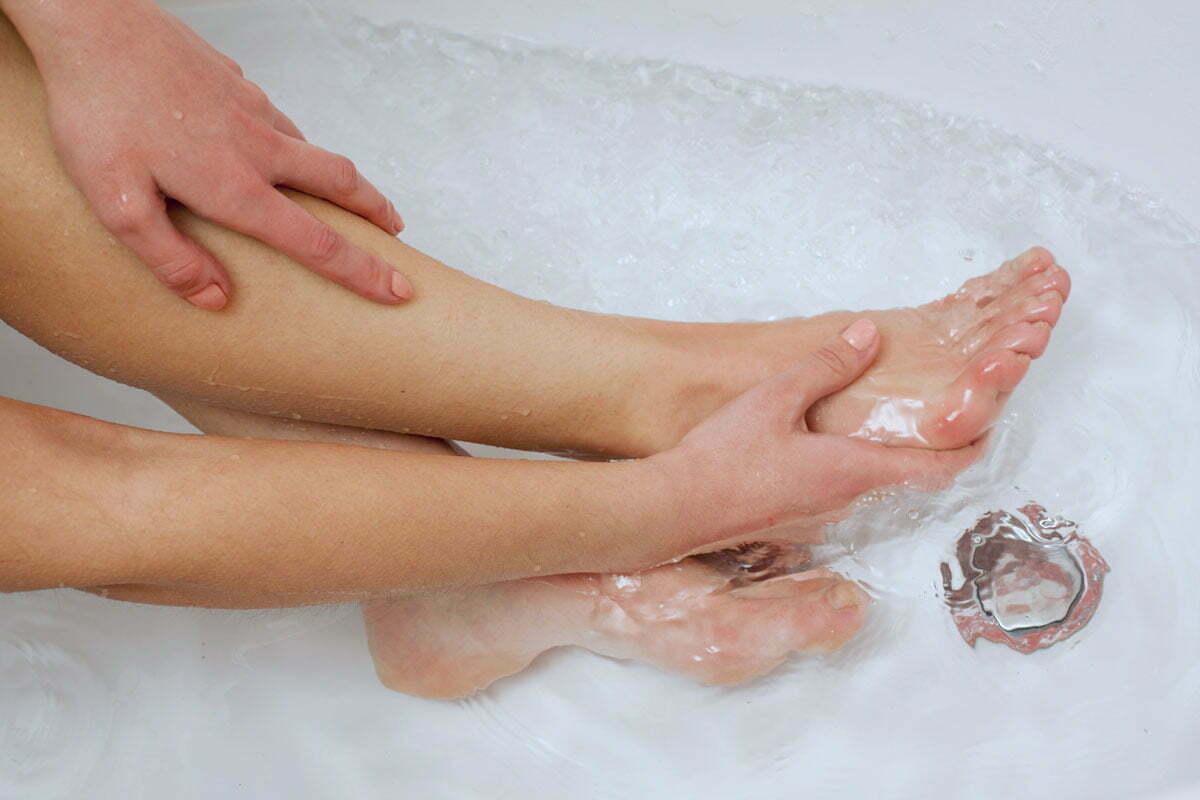Does Epsom Salt Really Work to Reduce Pain? Get the Facts Before Your Next Soak


Whether your sport of choice is ultra running or gardening, occasional aches and pains are part of life. While serious or lingering injuries may call for a trip to the doctor’s office, minor pain and swelling can usually be managed at home. One of the most well-known DIY pain relief remedies is Epsom salt soaks.
Inexpensive, available at any corner store, and endorsed by grandmothers and wellness gurus alike, an Epsom salt soak seems like a great option to treat sore muscles after a hard workout without the possible side effects of OTC pain relievers. But is it effective? Our mission at Support the Foot is to help people reduce pain and enjoy active lifestyles, so we did a little digging to find out: does Epsom salt work?
First, what is Epsom salt?
Epsom salt is a mineral compound called “magnesium sulfate heptahydrate,” or MgSO₄·7H₂O. Epsom salt is named after the town in England where the compound was first discovered in the water of a spring located there. For hundreds of years, Epsom salt has been touted as a cure-all for a myriad of issues, from constipation (it’s actually FDA approved as a laxative), to sleeplessness, to muscle and joint pain.
Can soaking in an Epsom salt bath help with muscle pain?
The idea behind Epsom salt baths is this: dissolve the crystals in warm water, soak your aching part in for a few minutes, and your body will absorb the magnesium through the skin, causing the muscles to relax and reducing inflammation. Since magnesium, an essential mineral in our diets, is known to play an important role in muscle contraction, immune system response, and even brain function, it sounds plausible that this treatment would work for muscle pain.
Most likely, any pain relief benefits of Epsom salt soaks come more from the warmth of the water—the heat encourages blood flow to aching parts, helping the muscles relax.
However, there is very little reliable proof that Epsom salt baths offer any exclusive benefit. First of all, it takes a lot more than placing something on our skin or even dissolving it in water to help get it through the skin’s protective barriers (thank goodness—or we’d have a real problem every time we used finger paint as a kid). This article on the Pain Science blog explains the absorption issue in detail—read it if your interested; if not, suffice it to say that magnesium particles are not easily if at all absorbed through the skin, even if dissolved. Second, there’s no reliable evidence that the Epsom salts offer any measurable pain relief, even if the magnesium is absorbed.
Most likely, the benefits of Epsom salt soaks come from the warmth of the water—the heat encourages blood flow to aching parts, helping the muscles relax.
Are there any benefits to Epsom salts?
While there’s no proof that Epsom salt works any better than hot water, if you swear by Epsom salt baths after a tough day, there’s no reason to give them up! The salt can make the water feel softer and more soothing, and that can provide a relaxing experience that has additional mental and psychological benefits. Just be sure to use Epsom salts that have a “drug facts” box and/or are labeled “USP.” (That means the product has been tested and certified to be safe and acceptable for human use, vs agricultural-grade magnesium sulfate, which often has impurities.)
However, for noticeable muscle pain relief, you are likely better off supplementing your soak with a proven method, such as stretching, OTC pain medication, physical therapy—or, for foot, ankle, or knee pain, try taping with the QUICK TAPE® foot support strap.
We are reluctant to burst any bubbles when it comes to Epsom salts, but it’s always good to know the facts and be realistic about any treatment option you try. For facts on QUICK TAPE®, click here, or contact us for more information. We would love to help you find lasting relief from foot pain and conditions such as plantar fasciitis, shin splints, and more.
